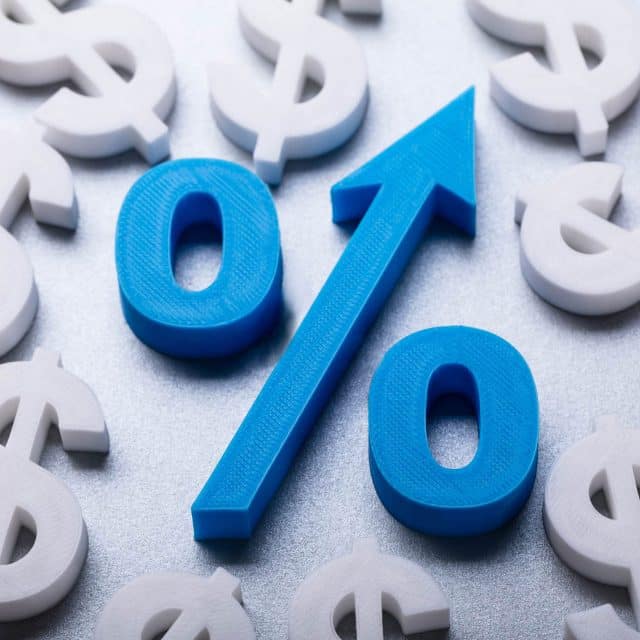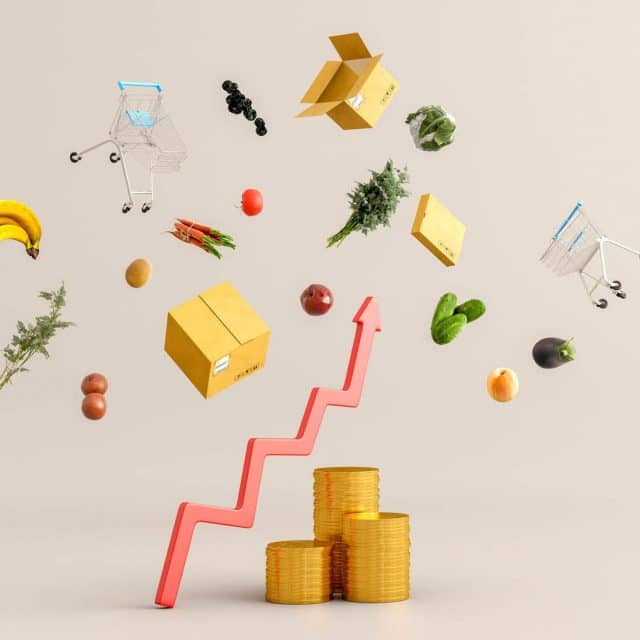
Consumers’ Finances Weakened in 2022
Consumers followed some significant ups and downs over the past three years with emergence of the COVID-19 pandemic, business closures and work stoppages, government stimulus and expanded unemployment benefits, surprise housing shortages, faltering supply chains, and now 40-year high inflation. Understanding consumers’ positions is important because they account for roughly two-thirds of the U.S. gross domestic product. Thus, consumer wealth, income and confidence will dictate future consumption, and determine the potential for rent increases.
Using the stock market as a wealth proxy, consumer wealth is greater than the pre-pandemic level but suffered significant losses since the beginning of the year (Figure 1). This pattern affects individuals in two ways: first, nominal wealth is higher than two years ago; second, our psyche has dampened from the recent decline. Wealth-driven consumption could continue to rise unless everyone fully adjusted to the peak wealth of 2021.
Figure 1 – Source: St. Louis Federal Reserve FRED and Seeking Alpha as of October 2022
Inflation-adjusted wages return to 2019 levels
Income is the direct source of current consumption. The pattern in the wage chart (Figure 2) is like the wealth chart but the impact is greater. Mid-2020 was the introduction of stimulus payments, corporate “loans” (that were forgiven if used to pay salaries) and unemployment enhancements. These measures combined with continued earnings for many Americans to produce the highest recent level of wage growth at 9.8% over mid-2019. This elevated level lasted through mid-2021 but wages have fallen from the stimulus heights. After the rise and fall, April 2022 inflation-adjusted wages are almost equal to April 2019 wages. We don’t yet have data to determine if wages have matched inflation since April.
Figure 2 – Sources: St. Louis Federal Reserve FRED and Seeking Alpha as of October 2022
Borrowing more expensive

Available financing also impacts consumers’ ability to make significant purchases such as a house, a car or a major appliance. Referring to the Treasury chart (Figure 3), interest rates fell by 72% from 2.4% in mid-2019 to 0.65% in mid-2020. This rate was back to 2.75% in April 2022 and 3.5% in September 2022. Thus, borrowing is significantly more expensive today than it was during 2019. This is only a proxy for consumer borrowing costs because it is the federal borrowing rate. In comparison, 30-year fixed mortgage rates during these times were 4.25% falling to 2.75% and jumping to 6.5% most recently. By any measure, debt is more expensive in 2022 than it was in 2019. This is a clear reduction in consumer power.
Figure 3 – Source: St. Louis Federal Reserve FRED and Seeking Alpha as of October 2022
Higher prices
The other side of consumption is price. The consumer price index (CPI) chart (Figure 4) shows another very clear shift over the past two years. During 2021, inflation spiked to levels not experienced since the 1980s. Throughout 2022 general prices have exceeded 2021 prices by more than 7%. Every consumer realizes that prices are higher today than they were pre-pandemic.
Figure 4 – Source: St. Louis Federal Reserve FRED and Seeking Alpha as of October 2022

Considering the latest conditions of wealth, income, finance and prices, consumers are in a slightly weaker position than before the onset of the pandemic. Current wealth and income are at or above 2019 levels but below recent peaks. This gives us the capacity to consume slightly more. However, these gains are more than offset by greater financing costs and higher prices. Understanding that consumers are closer to their limits may lead businesses to better position assets and engage in more flexible negotiations.